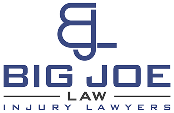Comparative negligence laws allow you to recover compensation for your injuries even when you share some responsibility for the accident that caused them. California follows a pure comparative negligence system, meaning your compensation reduces by your percentage of fault, but you can still recover damages even if you were 99% responsible for the accident. This legal principle ensures that accident victims can pursue justice and compensation proportional to the other party’s contribution to their injuries.
Many people abandon valid injury claims because they believe their partial fault eliminates their right to compensation entirely. At Big Joe Law, we’ve successfully recovered substantial settlements for clients who initially thought their cases were hopeless due to shared responsibility. We understand how comparative negligence works and fight to minimize your assigned fault while maximizing your recovery.
How California’s Comparative Negligence System Works
California’s pure comparative negligence system differs from other states’ laws in important ways. Under this system, your compensation decreases by exactly your percentage of fault, but you never lose your right to recover damages entirely. If you were 30% at fault for an accident causing $100,000 in damages, you could still recover $70,000 from the other party.
This system contrasts with contributory negligence states, where any fault on your part completely bars recovery, and modified comparative negligence states, where fault over a certain threshold eliminates your claim. California’s approach recognizes that most accidents involve multiple contributing factors and allows for fair compensation based on each party’s actual responsibility.
The determination of fault percentages happens through careful analysis of evidence, witness testimony, accident reconstruction, and legal arguments. Insurance companies and juries consider factors like traffic violations, distracted driving, speeding, failure to maintain proper lookout, and violations of safety rules when assigning fault percentages.
How Insurance Companies Use Comparative Negligence
Insurance companies aggressively use comparative negligence to minimize claim payments. They often assign fault percentages that don’t reflect the actual evidence, hoping you’ll accept their assessment without challenge. Adjusters receive training in finding ways to shift blame to injured parties, even in cases where their responsibility is minimal.
Common tactics include questioning your actions leading up to the accident, scrutinizing your driving record for patterns of risky behavior, and emphasizing any traffic violations or safety rule violations they can identify. They may argue you were distracted, not wearing safety equipment, or failed to take reasonable precautions to avoid the accident.
Insurance companies also use comparative negligence as a negotiation tool. They may initially assign unreasonably high fault percentages to you, then offer to “compromise” on a percentage that’s still unfavorable but seems reasonable compared to their initial position.
The Impact of Fault Percentages on Your Recovery
Understanding how fault percentages affect your compensation helps you evaluate settlement offers and make informed decisions about your case. Small differences in assigned fault percentages can mean thousands of dollars in your final recovery. If you suffered $200,000 in damages, the difference between 20% and 30% fault means $20,000 less in compensation.
Insurance companies know most people don’t understand these calculations and may accept unfair fault assignments without realizing their financial impact. They may also frontload discussions about your fault while downplaying the extent of your damages, making their settlement offers seem more reasonable than they actually are.
Building Strong Comparative Negligence Cases
Successful comparative negligence cases require immediate action to preserve evidence and build compelling arguments. We begin investigating cases promptly, securing accident scenes, interviewing witnesses, and gathering documentation before memories fade or evidence disappears.
We work with accident reconstruction professionals who analyze physical evidence, vehicle damage patterns, skid marks, and other factors to determine how accidents actually occurred. These analyses often contradict insurance company assumptions about fault. Witness testimony provides valuable perspectives on driver behavior and traffic conditions.
Why Legal Representation Matters
Insurance companies count on unrepresented accident victims accepting unfair fault assignments because they don’t understand their rights or lack the resources to challenge these determinations. Having experienced legal representation changes the entire dynamic of your case and often results in more favorable fault assignments and higher compensation.
We understand the investigation techniques, legal arguments, and negotiation strategies necessary to minimize your assigned fault percentage. Our experience with comparative negligence cases allows us to anticipate insurance company tactics and counter them effectively.
Fighting for Fair Compensation Despite Shared Fault
Even when you share responsibility for an accident, you deserve fair compensation for your injuries and losses. California’s comparative negligence system provides opportunities for recovery even in complex cases involving shared responsibility. Don’t let insurance companies convince you that partial fault eliminates your right to compensation, or accept unfair fault assignments without challenge.
We’ve helped countless clients recover substantial compensation despite initial fault assignments that seemed to doom their cases. Our approach focuses on thorough investigation, compelling evidence presentation, and aggressive advocacy to ensure fault percentages reflect the actual evidence rather than insurance company assumptions. Contact Big Joe Law today at (818) 821-0026 or through our contact form to discuss your case and learn how we can fight for fair fault assignments and maximum compensation despite shared responsibility.

